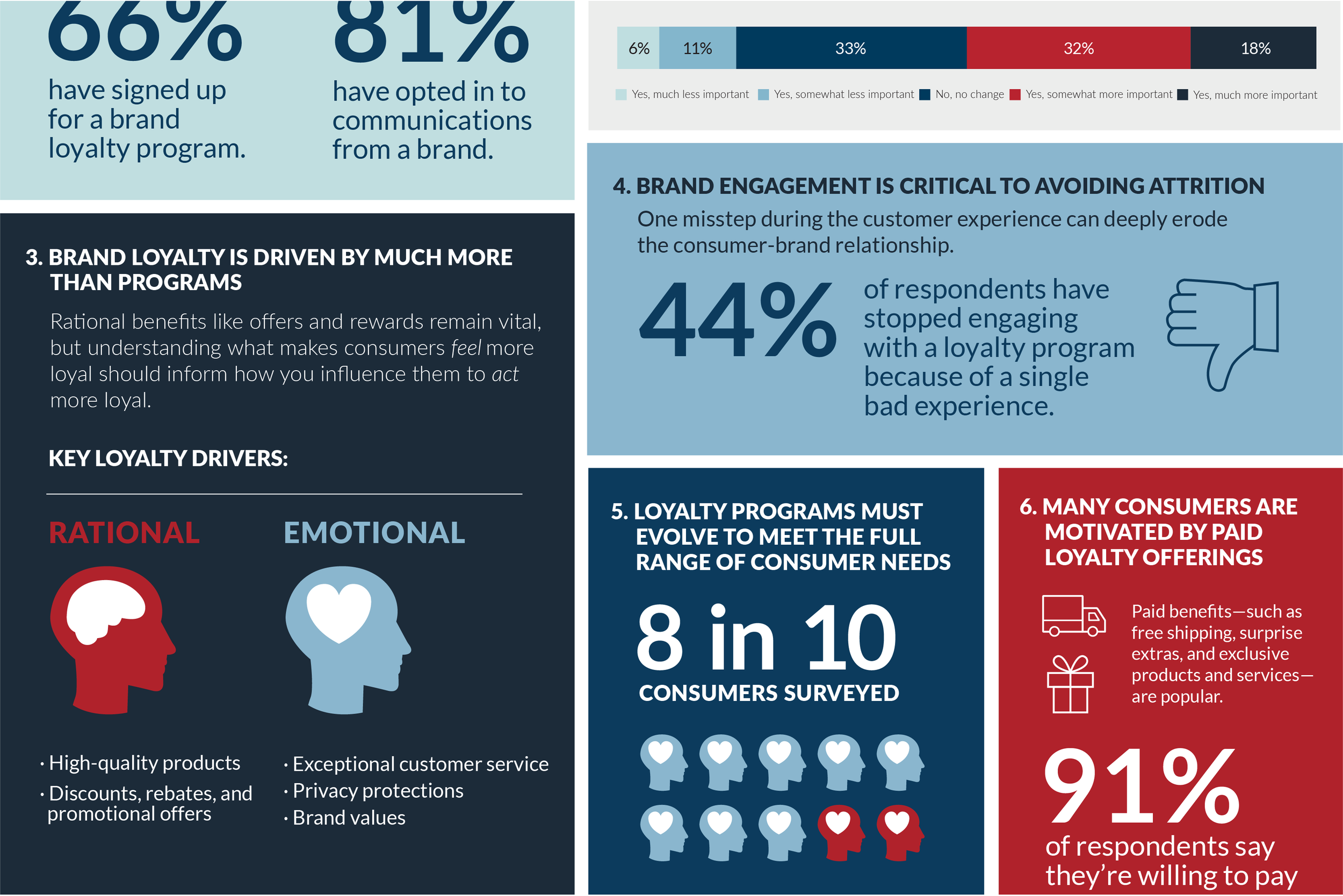Seize the Opportunities: Digital Marketing Challenges Have Silver Linings

Digital marketing needs to accommodate consumers’ post-pandemic outlook.
During the first few months of the COVID-19 pandemic and the stay-at-home orders, The Harris Poll determined that between 46% and 51% of U.S. adults reported using social media more since the outbreak began. Among the 18–49 age group, the number increased to more than 60%.
Today’s customers are leaning into digital commerce and contact-free purchases at an accelerated rate. The combined pressures of stay-at-home orders and store and restaurant closures pushed consumers to change long-established habits. Online shopping, curbside pickup, food delivery and contactless payment options weren’t new concepts in early 2020, but the pandemic circumstances made them urgently necessary.
The growth of digital commerce as a dominant way to make purchases in U.S. homes is an obvious boost for digital marketing and online engagement. However, fast and unexpected expansion comes with growing pains. For example, some brands struggled to navigate operational challenges and meet product demand. A recent McKinsey study shows that 48% of respondents purchased from a new brand during the pandemic solely because of product availability issues.
Let’s take a glass-half-full perspective on some of the unprecedented difficulties and circumstances of 2020. For marketers — and, arguably, all of us — every challenge brings a plus-one: opportunity. Let’s look at some of the current challenges brands are facing, extrapolate how consumers may respond and consider what opportunities can be leveraged.
Challenge 1: More screen time.
Prediction: Consumers will be more selective about the apps and social media channels that deserve their attention and time.
Opportunity: Meet your consumers wherever they are.
Marketers need to find their target consumers and engage them on their chosen turf. It will be important to ask two key questions: Where does your brand fit in your consumers’ ecosystem of apps and social platforms? And how can you best reach them there?
Brand Example:
While many brands adopted a wait-and-see approach to this new social platform, Chipotle has amassed more than 1.4 million followers on TikTok — the youth-driven app that’s taken the world, and brands, by storm. According to an estimate from App Annie and TechCrunch, more than 1.2 billion people are expected to be active monthly TikTok users in 2021. TikTok already tops the list for hours spent on social networks.*
Chipotle’s TikTok strategy embraces branded challenges connected to current promotions. And the results have been impressive. For example, the #LidFlipChallenge, originally introduced to celebrate free delivery for digital orders, amassed 268 million views and broke digital sales records. For National Avocado Day, when Chipotle offers guacamole as a free add-on, the company created the #GuacDance Challenge, which generated over 500 million impressions from more than 250,000 user-generated videos. By leveraging social trends and building challenges around its promotions, Chipotle has earned its place as a TikTok favorite.
Chipotle builds brand awareness and deepens customer engagement by posting content on the social platform its customers use most. That’s smart digital marketing.
Challenge 2: Expanded demand and new engagement habits.
Prediction: Some expanded digital engagement habits will likely continue after the COVID-19 crisis is over — e.g., online ordering, buy online pick up in-store (BOPIS) and contactless payment. Consumers of all ages will have more digital savvy than ever before, and brands that can’t adapt will struggle to keep up.
Opportunity: Combine data and emerging technology so consumers can shop easily using new purchase methods.
Brand Example:
With convenience as its guiding principle, Target streamlined the purchasing path from start to finish by building a robust app that supports shoppers online and in-store. Through the app, shoppers have access to store maps and real-time inventory information. The integration of social shopping features — such as Instagram Checkout — expands shoppers’ options. During the pandemic, the app has also supported services that minimize in-store contact. Target’s app gives its customers additional purchasing options and greater flexibility to shop in the way that works best for them.
Challenge 3: Serious search for value.
Prediction: Consumers will shop around for greater value elsewhere. Word-of-mouth and influencer marketing will continue to have a big impact on where consumers choose to buy.
Opportunity: Create influencer marketing that aligns with your brand in smart ways.
Brand Example:
Peloton used zero-party data from its community of riders to create a partnership inspired by Homecoming, the 2019 film by Beyoncé. In addition to curated workouts focused around Homecoming, the partnership ensures students at 10 historically Black colleges and universities (HBCUs) are given two-year Peloton digital memberships, a relationship-building step toward recruiting graduates to the company. Peloton fosters brand loyalty and drives engagement by associating its products and values with one of the best-known celebrities of our time.
Challenge 4: Distrust of data collection and ads.
Prediction: We’ll need to find a better balance between marketing personalization and giving people control of their data.
Opportunity: Hyper-target customers while offering data transparency.
Brand Example:
Spotify is known for its personalization efforts. For example, Wrapped, its year-in-review campaign, features an engaging video with users’ listening statistics and a curated playlist of their most-loved songs. Spotify creates personalized playlists for each user by honing in on their listening habits, and the streaming service gives users first access to concert tickets and merchandise from their most-listened-to artists. These features create an emotional bond with users. But how does Spotify balance data-use concerns and a curated experience? The service lets users download all the data Spotify collects on them and shares how it’s collected and how it will be used. Spotify’s policy of data transparency means users can control how they engage with the service — and that boosts users’ trust in how Spotify uses their individual data.
Challenge 5: Desire to connect with others.
Prediction: The bounce back to normal life will be slow, and people will continue seeking ways to connect with others, brands included.
Opportunity: Achieve one-to-one brand connections through digital channels.
Brand Example:
REI’s online community tool, REI Conversations, enables outdoor enthusiasts to connect and share questions, reflect on their experiences and give advice. The platform also boasts a local component that lets members find groups and events near them, and an employee-ask feature where users can directly chat with REI associates for pro tips, customer service inquires and general product questions. REI Conversations is one way the company positions itself as a go-to resource for products, education and inspiration. As of February 2021, the REI Conversations tool serves more than 15,000 members and facilitated more than 17,000 conversations.
The challenges of 2020 brought profound changes to our daily lives — including how we choose and interact with brands. In response to the pandemic and the social unrest of the last year, a new culture has taken hold: one that emphasizes well-being, encourages social responsibility, welcomes new technologies and upends how we think about nurturing personal and brand connections.
Brands looking to align their digital and social strategies with consumers’ shifting habits should remember that consumers have more options and higher expectations than before the pandemic. While changes in consumer mindset present new challenges, they also offer new opportunities. Brands just need to listen closely and stay nimble in their responses across all channels.
* Consumers are averaging 21.5 hours per month on TikTok, 17.5 hours on Facebook and 7.5 hours on Instagram (Daniel Carnahan, “U.S. Consumers Spend More Time on TikTok per Month than on Facebook or Instagram, Says App Annie,” eMarketer, January 14, 2021.)
The Lacek Group is a Minneapolis-based, data-driven loyalty, experience and customer engagement agency that has been delivering personalization for its world-class clients for more than 30 years. The Lacek Group is an Ogilvy company.

